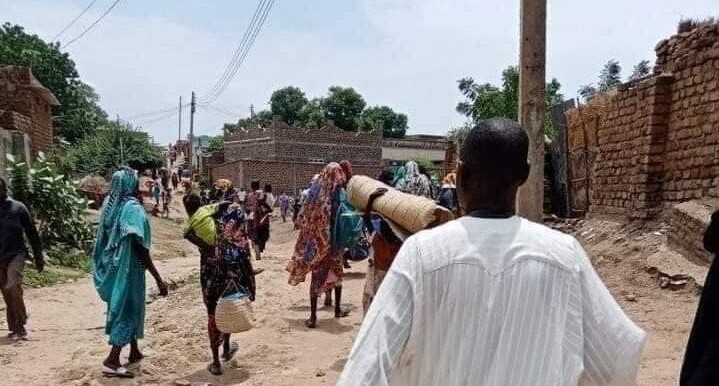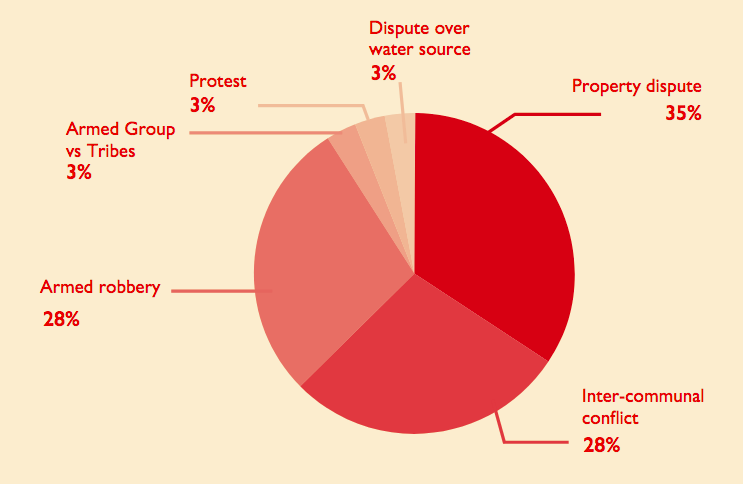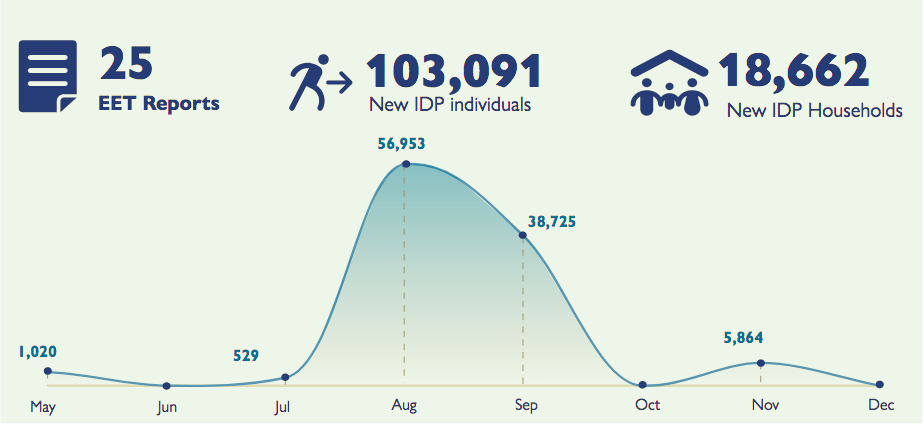DTM Sudan: Over 418,000 people newly displaced in 2022

Hausa people fleeing El Roseires in Blue Nile region after the eruption of violence on July 16 (File photo)
KHARTOUM –
“Over 418,000 people were newly displaced across the country in 2022 due to conflict and natural disasters such as flooding and fires,” according to a report published by the International Organization for Migration (IOM) Displacement Tracking Matrix (DTM) on Monday.
The overview of internal civilian displacement in Sudan reported that “most of the displacement was registered in Blue Nile (30.6 per cent), followed by West Darfur (22.8 per cent) and South Darfur (11.2 per cent)” in 2022.

New displacement was mainly caused by conflict. 21 incidences were recorded by DTM across the country in Darfur, Kordofan, and Blue Nile region.
Gerrit Kurtz wrote an article for the German Institute for International and Security Affairs in September about ongoing conflicts in Darfur. “Sudan is still a long way from a new transition process under a functioning non-military leadership with broad popular support. The security forces have effectively ruled since their coup in October 2021 and have only appointed a caretaker government.”
Incidents of tribal fighting in West Kordofan increased early June when fierce fighting in Lagawa left nine people dead and overwhelmed a new camp for the displaced near Delling in South Kordofan. End May, at least six people were killed in the violence that broke out between two Hamar clans.
In Blue Nile region, inter-communal violence led to the displacement of at least 66,000 people. Early February, activist Salah Ed Dalil told Radio Dabanga that the food and living conditions of the displaced people in Ed Damazin are “tragic.”
The clashes originally started in mid-July when indigenous tribesmen attacked Hausa families in the area south of El Roseires. The violence flared up again in September and October.

About 103,000 people were displaced due to river flooding (68 per cent) or flash floods (38 per cent) during the 2022 rainy season. The DTM report notes that “river floods are a common feature of the Nile basin and anticipated by many local communities in Sudan which base their livelihoods around agriculture and fishing. Regardless, many river floods remain destructive, particularly among urban centres.”
The rainy season in the southern parts of Sudan usually starts in May and reaches Khartoum in June-July. It lasts up to September, with the peak of rains and flooding observed between August and September in the past years. Flooding occurs every year in Sudan.
South Darfur and El Gezira were hit particularly hard last year. In El Managil, El Gezira, the Sadagaat Charity Organisation reported late August that “despite the great efforts made to help our people affected by the floods in El Managil, the team of the Sadagaat Charity Organisation and several other parties, has not been able to reach the people in the area, because the floods destroyed a number of roads”.
146 people died and 122 were injured due to flooding and torrential rains since June, the National Council for Civil Defence reported in October.
You can read the full DTM report here.











 and then
and then